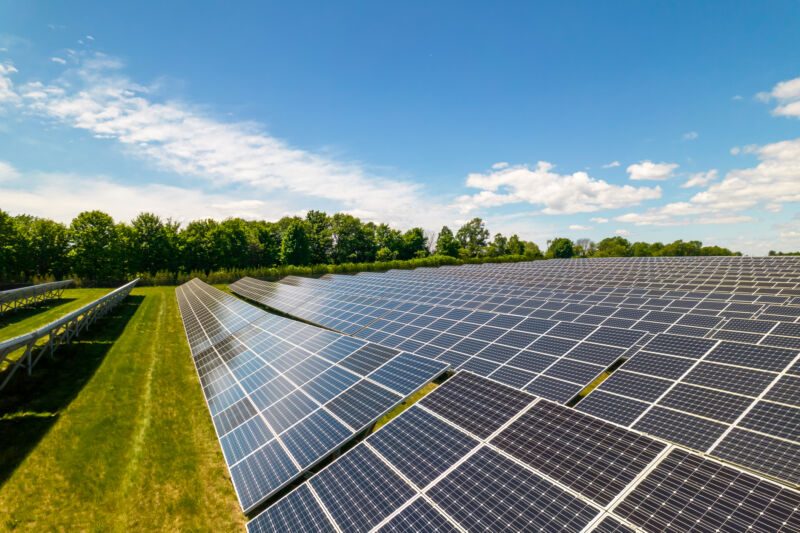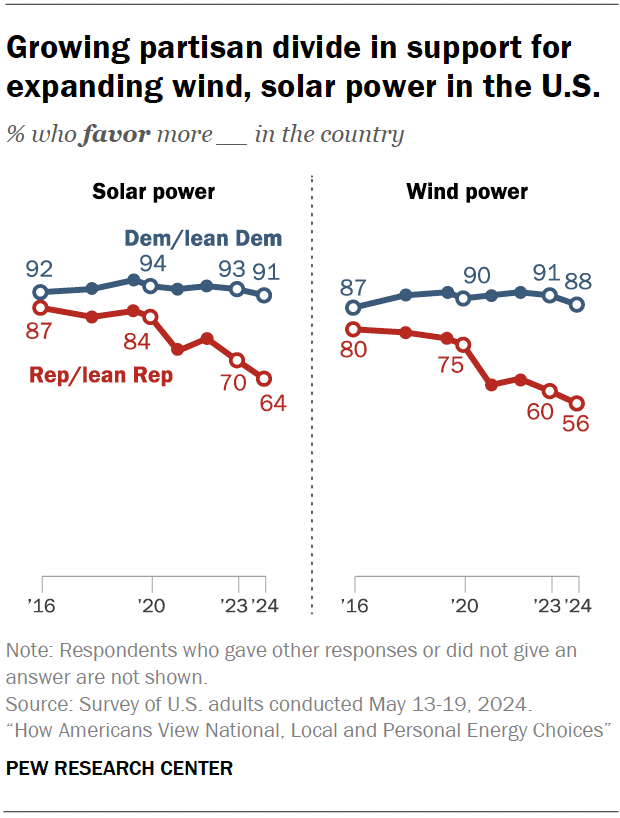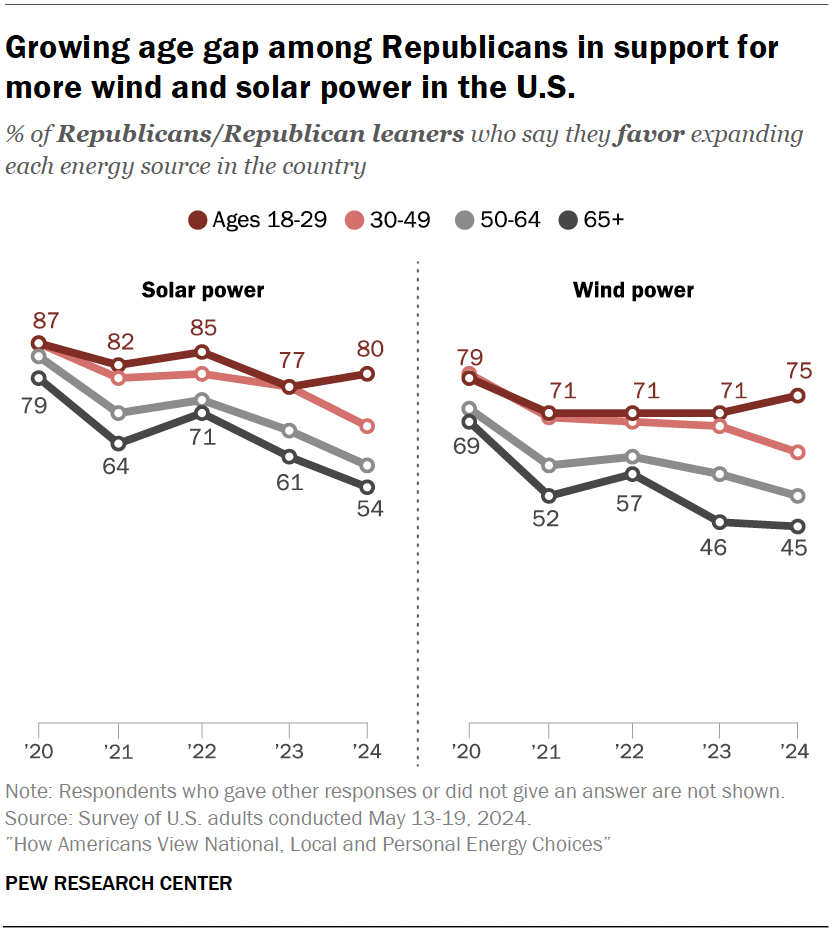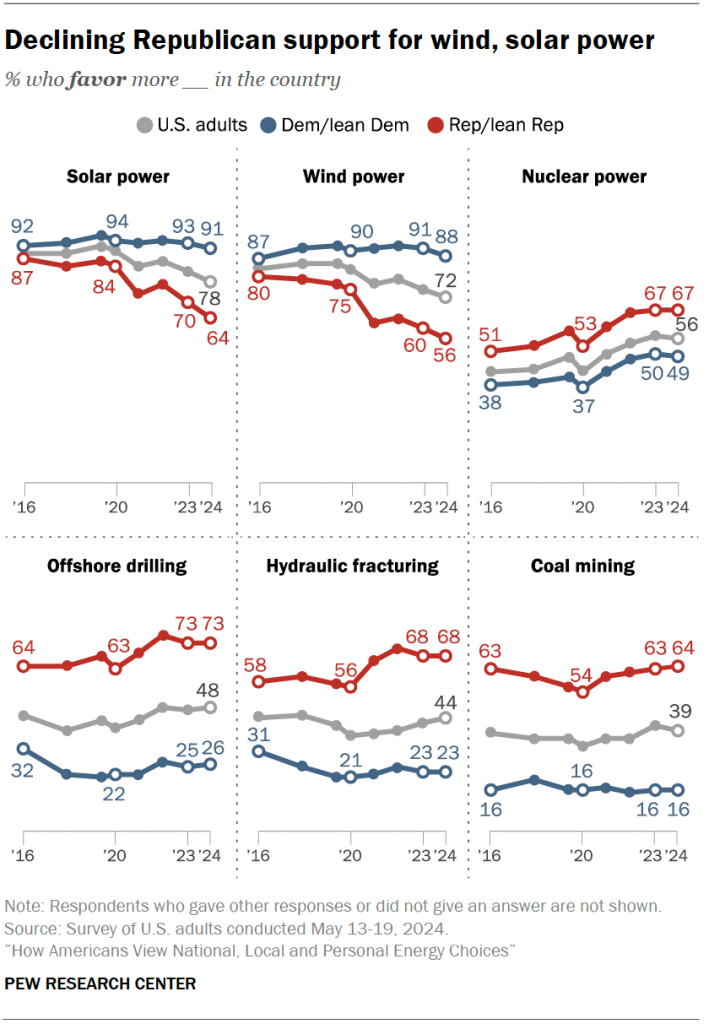
One of the most surprising things about the renewable energy explosion happening in the US is that most of it is happening in states governed by politicians who don’t believe in the problem that wind and solar need to address. Acceptance of evidence for climate change tends to be lowest among Republicans, yet many of the states where renewable energy has flourished — wind in Wyoming and Iowa, solar in Texas — are governed by Republicans.
That’s in part because, by 2020, there was a strong bipartisan consensus in favor of expanding wind and solar power, with over 75 percent support between the two parties. Since then, however, support among Republicans has fallen dramatically, approaching 50 percent, according to polling data released this week.

Renewables enjoyed solid Republican support until recently.
To a certain extent, none of this should be surprising. The current leader of the Republican Party has said that wind turbines cause cancer and offshore wind is killing whales. And conservative-backed groups have been spreading misinformation to drum up opposition to solar facilities.
Meanwhile, as of 2022, the Inflation Reduction Act has been touted as one of the achievements of the Biden administration and has spurred significant investment in renewable energy, much of it in red states. Negative partisanship is undoubtedly contributing to this decline in support.
One striking thing about the new polling data, collected by the Pew Research Center, is how dramatically it skews with age. When given a choice between expanding fossil fuel production or expanding renewable energy, Republicans under the age of 30 favored renewables by a 2-to-1 margin. Republicans over 30, in contrast, favored fossil fuels by wide margins that increased with age, reaching a three-to-one margin in favor of fossil fuels among those 65 and older. The decline in support occurred among those over 50 starting in 2020; Support held steady among younger cohorts until 2024, when the 30-49 age group began to shift in favor of fossil fuels.

Among young Republicans, support for renewable energy remains high.
Democrats, on the other hand, break in favor of renewables by 75 points, with little difference between age groups and no indication of significant change over time. They are also twice as likely as Republicans to think a solar farm will help the local economy.
Similar differences were evident when Pew asked about policies aimed at encouraging the sale of electric vehicles, with 83 percent of Republicans opposed to half of cars sold being electric by 2032. By contrast, nearly two-thirds of Democrats favored this policy.
There is also a marked rural/urban divide (consistent with Republicans receiving more support from rural voters). Forty percent of urban residents thought a solar farm would improve the local economy; only 25 percent of the villagers agreed. Rural residents were also more likely to say that solar farms made the landscape unattractive and took up too much space. (Suburban participants were consistently between rural and urban participants.)
What is behind these changes? The single biggest factor seems to be the negative party combined with the election of Joe Biden.

For Republicans, 2020 represented a turning point in terms of support for different types of energy. This was not true for the Democrats.
Among Republicans, support for every single form of power began to shift in 2020 — fossil fuels, renewables, and nuclear. Among Democrats, this is largely untrue. Their high level of support for renewable energy and aversion to fossil fuels remained largely unchanged. The only exception is nuclear power, where support grew from both Democrats and Republicans (the Biden administration has adopted a number of pro-nuclear policies).
This is not to say that non-political factors play no role. The rapid expansion of renewable energy means that many more people are seeing open facilities near them and see this as an indication of a changing society. Some degree of backlash was almost inevitable and, in this case, the close ties between conservative lobbyists and fossil fuel interests were ready to take advantage of it.
#bipartisan #consensus #favor #renewable #energy
Image Source : arstechnica.com
